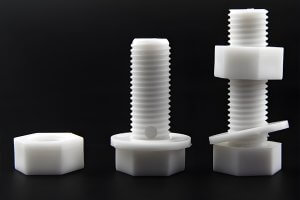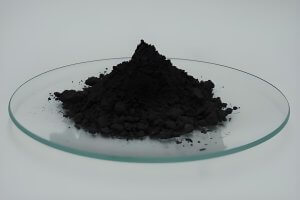Introduction to Titanium Dioxide
Titanium dioxide, a white pigment that is chemically inert, stable, and nontoxic, boasts widespread use in various industries due to its ability to impart brightness and opacity. Found in items ranging from paints and plastics to foods and cosmetics, it serves as a vital component by enhancing durability and ensuring longevity of products. In the realm of personal care, titanium dioxide is integrated into sunscreens for its effectiveness in blocking ultraviolet rays. Additionally, this compound plays a crucial role in manufacturing processes, where it contributes to the production of rubbers, papers, and printing inks, showcasing its versatility across multiple applications.
The Chemical Properties of Titanium Dioxide
Titanium dioxide, chemically represented as TiO2, is a stable oxide of the element titanium. It naturally exists in several mineral forms, notably rutile and anatase, both characterized by high refractive indices that contribute to its significant light-scattering properties. Unlike other metal oxides such as iron oxide or zinc oxide, titanium dioxide has superior whiteness and UV resistance, making it well-suited for applications requiring endurance against sunlight and weather elements. As a photocatalyst, TiO2 can accelerate chemical reactions under UV light, which is not commonly observed in similar substances. Its non-reactive nature allows it to be compatible with various substrates without altering their color or structural integrity.
Application of Titanium Dioxide in Consumer Products
Titanium dioxide plays a critical role in various consumer products, including food, cosmetics, and paints. In foods, it serves as a colorant to enhance the visual appeal of confectionery, sauces, and dairy goods. Within the realm of cosmetics, titanium dioxide is valued for its ability to scatter light, thus acting as a pigment in products such as sunscreens and makeup, providing coverage and protection from ultraviolet rays. Moreover, titanium dioxide’s high refractive index and strong opacity lead to widespread use in paints, improving durability and consistency while delivering a bright, clean appearance. These applications benefit greatly from titanium dioxide’s properties, ensuring aesthetic enhancement along with functional improvements like UV resistance and extended product lifespan.
Health Concerns Related to Titanium Dioxide
The safety profile of titanium dioxide has been scrutinized through numerous research studies, aiming to understand any potential health risks associated with its exposure. Regulatory agencies across various countries have evaluated these findings and determined respective stances on the compound’s use. For instance, in food applications, the European Food Safety Authority (EFSA) considers a certain level of intake as safe, while other countries might impose stricter regulations following their interpretations of the data. Despite variations in regulatory standings, common concerns often revolve around the inhalation of fine particles and the effects of long-term accumulation within the human body. As an example, inhalation of titanium dioxide dust has been associated with respiratory tract issues, prompting occupational safety guidelines to manage worker exposure in industrial settings.
Environmental Impact of Titanium Dioxide
Titanium dioxide (TiO2), while useful for its pigmentation and photocatalytic properties, can pose environmental concerns when improperly disposed of or released into ecosystems. The substance’s inertness contributes to a low biodegradability, allowing it to persist in the environment and potentially disrupt natural processes. In aquatic systems, TiO2 nanoparticles may interfere with photosynthesis by blocking sunlight penetration or harming phytoplankton—a foundational food source for marine life. To mitigate these effects, sustainable manufacturing practices include strict containment measures during production to prevent spills, utilizing closed-loop systems that minimize waste, and developing recycling protocols for post-consumer products containing titanium dioxide. These strategies aim to reduce the ecological footprint of TiO2, ensuring that this versatile compound remains an asset rather than a liability to our planet.
Exposure Scenarios and Risk Management
In the context of consumer safety, typical exposure levels to titanium dioxide are considered low. Products like sunscreens, toothpastes, and certain foods contain titanium dioxide for its pigmenting or UV protection properties. However, the form used in these products is generally not inhalable, reducing potential risks. In occupational settings, where powdered forms of titanium dioxide may pose an inhalation risk, guidelines have been established such as adequate ventilation and personal protective equipment (PPE) to manage exposure. Regulatory bodies like OSHA provide permissible exposure limits to safeguard workers’ health during the manufacturing or handling processes.
Debunking Common Misconceptions about Titanium Dioxide
Titanium dioxide, a naturally occurring oxide of the element titanium, has been subject to various myths concerning its safety. A prevalent misconception is that it poses significant health risks when used in food or cosmetic products. Contrary to such claims, extensive scientific research and regulatory reviews across the globe have reinforced the compound’s safety for these applications, classifying it as non-toxic and safe for human use within established limits. For instance, the European Food Safety Authority (EFSA) has conducted thorough assessments which conclude that titanium dioxide does not cause genotoxicity or carcinogenic effects when ingested. It’s crucial to differentiate between occupational exposure to fine particles during manufacturing and the micron-size particles used in consumer goods, where no significant absorption takes place and health impacts are negligible. This evidence-based conclusion urges consumers to rely on verified science rather than unsourced assertions, thereby recognizing titanium dioxide’s actual safety profile.
Recent Developments and Future Research on Titanium Dioxide Safety
In recent scientific inquiries, titanium dioxide has been scrutinized for its safety profile, especially in the context of nano-sized particles. Latest findings suggest that while bulk titanium dioxide is generally considered inert and safe, nanoparticles may exhibit different properties with potential health implications. For instance, studies have shown that inhalation of ultrafine titanium dioxide particles could cause respiratory tract inflammation in rats. However, translating these animal study results to humans requires careful interpretation. Further research needs to focus on chronic exposure effects, mechanisms of action at the cellular level, and real-world exposure scenarios, which are critical to accurately assess the potential risks titanium dioxide nanoparticles may pose to human health. Such investigations will be pivotal in formulating industry guidelines and regulatory policies.
Q&A on Titanium Dioxide Safety and Use
Q1: Titanium dioxide is commonly employed as a pigment for its unparalleled brightness and very high refractive index. It provides whiteness and opacity in products like paints, plastics, papers, inks, foods, and most toothpastes. Additionally, it acts as a UV filter in sunscreen formulations. Q2: The FDA has approved titanium dioxide for use in various applications including food additives, with specific regulations concerning maximum permitted levels. Q3: To minimize exposure to titanium dioxide, consumers can opt for titanium-free product alternatives, check labels for ingredient lists, and choose natural or organic items where possible. Q4: When it comes to natural substitutes, substances such as zinc oxide serve as an alternative white pigment and UV blocker, though each alternative should be evaluated for its efficacy and safety in the intended application.
Other Articles You Might Enjoy
- does titanium rust? what is titanium ?
Introduction to Titanium Titanium is a lustrous, silver-gray metal known for its high strength-to-weight ratio, corrosion resistance, and ability to withstand extreme temperatures. Widely used in aerospace designs, medical devices,…
- Is titanium magnetic? what is titanium ?
Introduction to Titanium Titanium is a strong, lightweight metal known for its excellent corrosion resistance, high strength-to-weight ratio, and ability to withstand extreme temperatures. These properties make it an essential…
- Everything You Should Know About CNC Machining Titanium
Titanium (Ti), a shiny metal, has a high resistance to corrosion and high strength. Titanium is extremely lightweight and biocompatible. Ti is extracted from primarily unconsolidated sediments. Depending on the…






